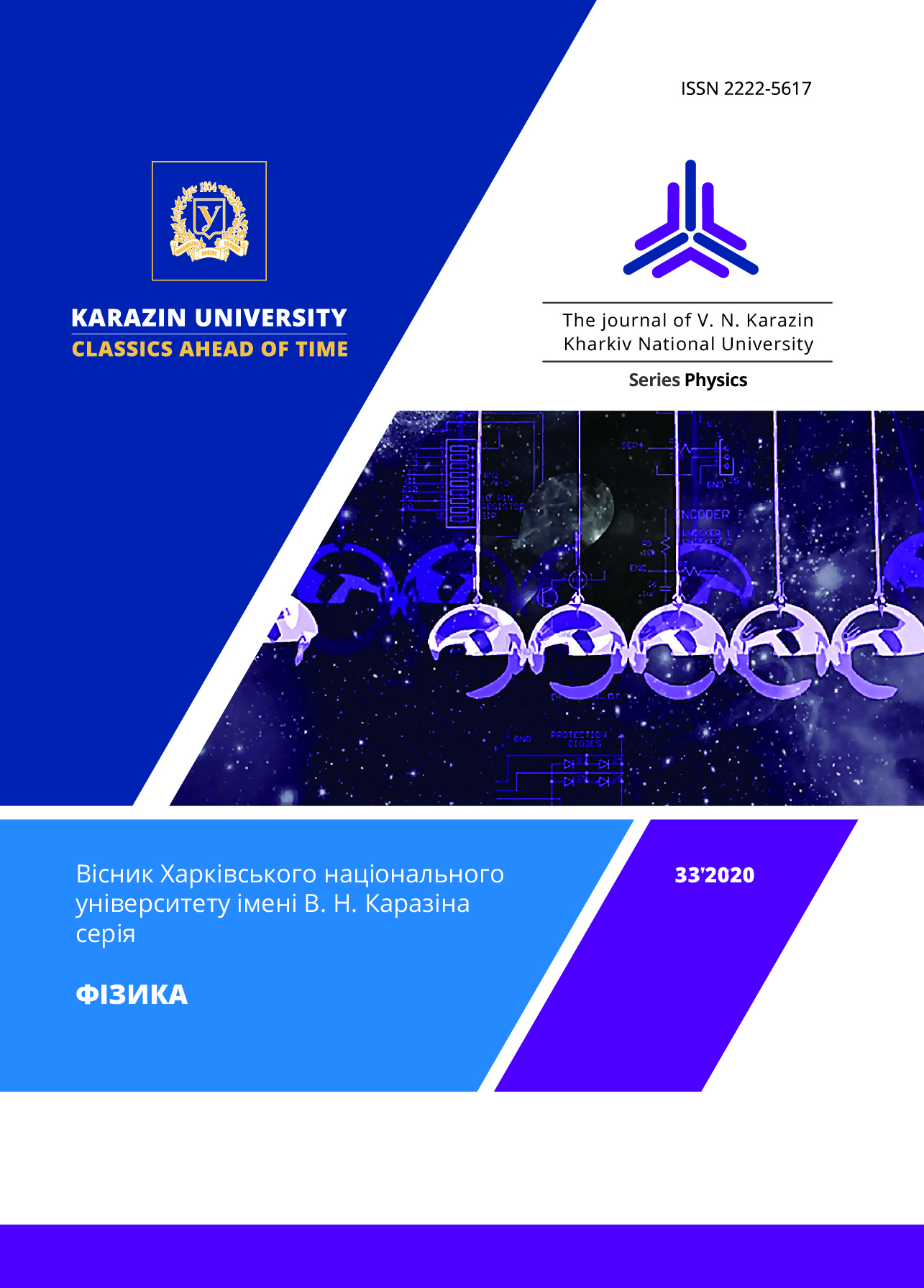Computer simulations of hydrostatic pressure influence on screw <a> dislocation slip in Mg
Abstract
Atomistic modeling of hydrostatic pressure influence on critical resolved shear stress was performed for glide of screw <a> dislocation in magnesium. It was found that application of pressure can change the resolved critical stress for basal and prismatic slip. The effect is dependent on dislocation core structure. It can be connected to the pressure dependence transient dilatation of the dislocation core.
Downloads
References
M.M. Avedesian, H. Baker. Magnesium and Magnesium Alloys, (ASM International, Materials Park, OH, 1999), 350 p.
J.W. Christian, S. Mahajan. Prog. Mater. Sci., 39, 1 (1995).
A. Chapius, J.H. Driver. Acta Mater., 59, 1986 (2011).
H. Asgari, J.A. Szpunar, A.G. Odeshi. Mater. Des.,61, 26 (2014).
M.A. Kumar, I.J. Beyerlein, C.N. Tome. J. Alloys Comp., 695, 1488 (2016).
S. Biswas, S.S. Dhinwal, S. Suwas. Acta Mater., 58, 3247 (2010).
P. Molnar, A. Jager. Philos. Mag., 93, 3612 (2013).
R.Z. Valiev, T.G. Langdon, Progr. Mater. Sci., 51, 881 (2006).
J. Horky, A. Ghaffar, K. Werbach, et. al. Materials, 12, 2460 (2019).
C.F. Gu, L.S. Toth, D.P. Field, J.J. Fundenberger, Y.D. Zhang. Acta Mater., 61, 3027 (2013).
F. Kang, J.Q. Liu, J.T. Wang, X. Zhao. Scripta Mater., 61, 844 (2009).
F. Kang, J.Q. Liu, J.T. Wang, et. al. Int. J. Mat. Res., 100, 1686 (2009).
V.V. Stolyarov, R. Lapovok, I.G. Brodova, P.F. Thomson. Mater. Sci. Eng. A, 357, 159 (2003).
F.R.N. Nabarro, T.R. Duncan. Can. J. Phys., 45, 939 (1967).
M.S. Duesberry. Proc. Roy. Soc. Lond. A, 392, 145 (1984).
R. Gröger. Phil Mag., 94, 2021 (2014).
J.A. Barendreght Jr., W.N. Sharpe. J. Mech. Phys. Solids, 21, 113 (1973).
A. Ostapovets, O. Vatazhuk. Comp. Mater. Sci., 142, 261 (2018).
S. Yoshikawa, D. Matsunaka. Mater. Trans., 61, 127 (2020).
V.V. Bulatov, O. Richmond, M.V. Glazov. Acta mater., 47, 3507 (1999).
Y.-M. Kim, N. J. Kim, B.-J. Lee. CALPHAD, 33, 650 (2009).
S. Plimpton. J. Comp. Phys., 117, 1 (1995).
A. Stukowski. Modell. Simul. Mater. Sci. Eng., 18, 015012 (2009).
J.A. Yasi, T. Nogaret, D.R. Trinkle, et. al. Modell. Simul. Mater. Sci. Eng., 17, 055012 (2009).
Z. Wu, M. Francis, W. Curtin. Model. Simul. Mater. Sci. Eng., 23, 015004 (2015).
X.Y. Liu, J.B. Adams, F. Ercolessi, J.A. Moriarty. Model. Simul. Mater. Sci. Eng., 4, 293 (1996).
I. Shin, E.A. Carter. Int. J. Plasticity, 60, 58 (2014).
A. Ostapovets, O. Vatazhuk. Low. Temp. Phys., 43, 421 (2017).
C.D. Barrett, L.R. Carino. Integrating Materials and Manufacturing Innovation, 5, 9 (2016).
J.P. Hirth, J. Lothe. Theory of dislocations, New York, McGraw-Hill, 1968, p.780.
D.Y. Sun, M.I. Mendelev, C.A. Becker, et. al. M. Asta, Phys. Rev. B, 73, 024116 (2006).








3.gif)
